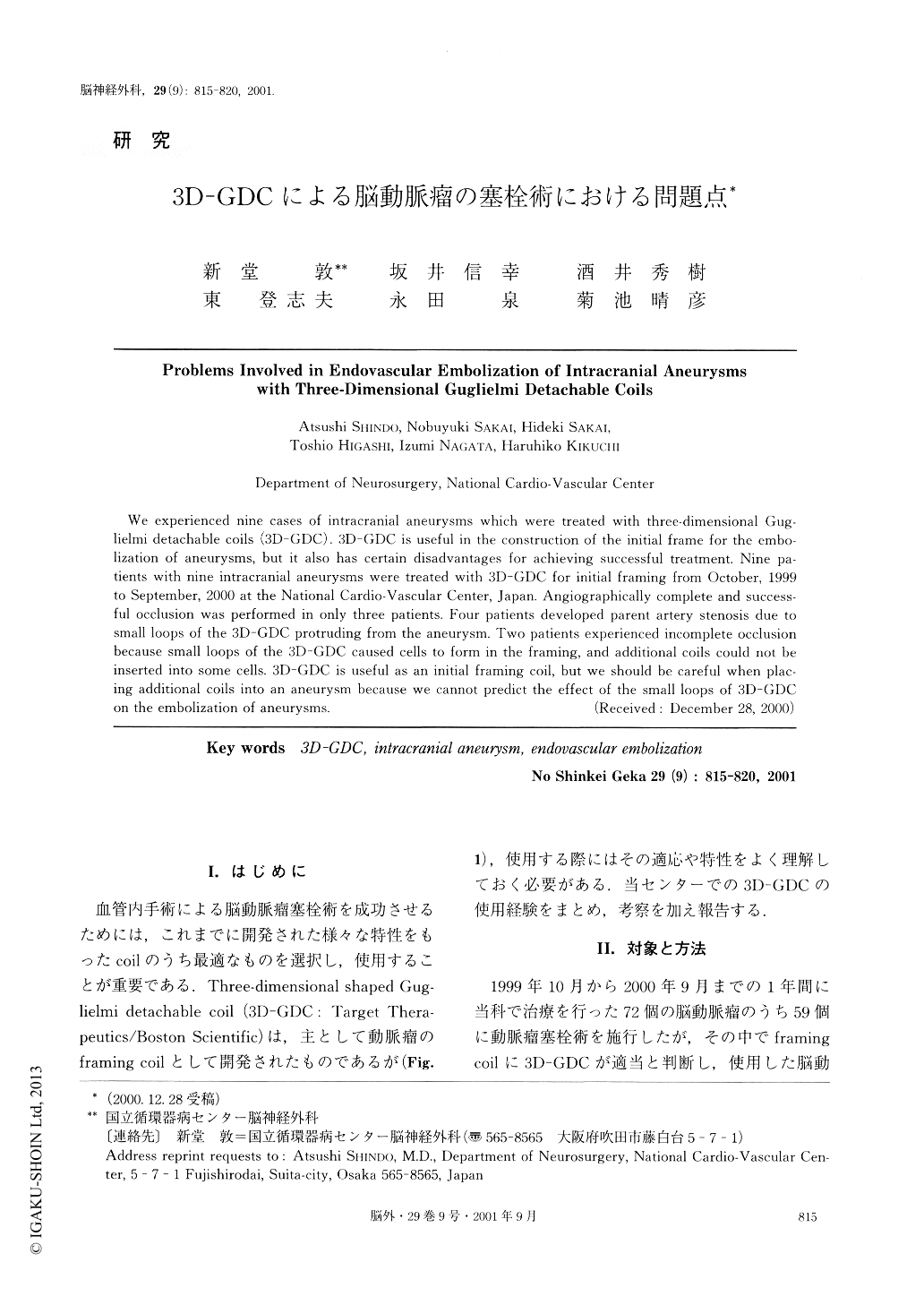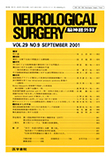Japanese
English
- 有料閲覧
- Abstract 文献概要
- 1ページ目 Look Inside
I.はじめに
血管内手術による脳動脈瘤塞栓術を成功させるためには,これまでに開発された様々な特性をもったcoilのうち最適なものを選択し,使用することが重要である.Three-dimensional shaped Gug-lielmi detachable coil(3D-GDC:Target Thera-peutics/Boston Scientific)は,主として動脈瘤のframing coilとして開発されたものであるが(Fig.1),使用する際にはその適応や特性をよく理解しておく必要がある.当センターでの3D-GDCの使用経験をまとめ,考察を加え報告する.
We experienced nine cases of intracranial aneurysms which were treated with three-dimensional Gug-lielmi detachable coils (3D-GDC). 3D-GDC is useful in the construction of the initial frame for the embo-lization of aneurysms, but it also has certain disadvantages for achieving successful treatment. Nine pa-tients with nine intracranial aneurysms were treated with 3D-GDC for initial framing from October, 1999 to September, 2000 at the National Cardio-Vascular Center, Japan. Angiographically complete and success-ful occlusion was performed in only three patients. Four patients developed parent artery stenosis due to small loops of the 3D-GDC protruding from the aneurysm. Two patients experienced incomplete occlusion because small loops of the 3D-GDC caused cells to form in the framing, and additional coils could not be inserted into some cells. 3D-GDC is useful as an initial framing coil, but we should be careful when plac-ing additional coils into an aneurysm because we cannot predict the effect of the small loops of 3D-GDC on the embolization of aneurysms.

Copyright © 2001, Igaku-Shoin Ltd. All rights reserved.


